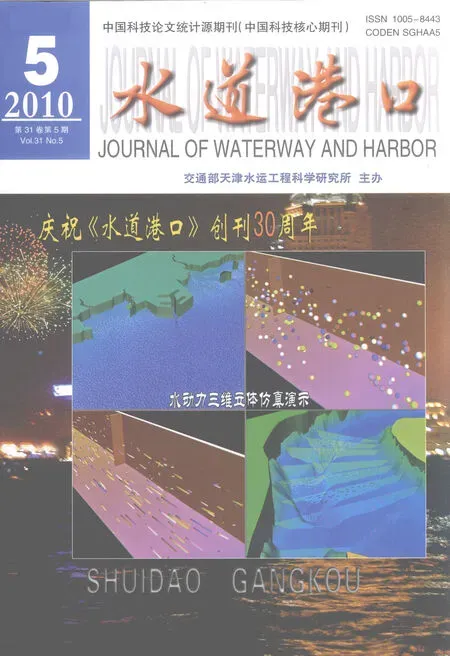A three-dimensional,wave-current coupled,sediment transport model for POM
WANG Xiao-hua
(University of New South Wales,Canberra 2600,Australia)
In the high-energy environment of coastal seas and estuaries,strong sediment resuspension/deposition events are driven by surface waves,tides,winds and buoyancy driven currents.In recent years,A POM based three-dimensional,wave-current coupled,sediment transport model has been developed by the University of New South Wales.This paper presents several examples of the model applications to study sediment dynamics in the environments where forcings such as waves,tides,and winds are equally important to affect sediment fluxes and distributions.Firstly,the sediment transport model coupled to the Yellow Sea general circulation model and a third generation wave model SWAN was implemented in the Yellow Sea to study the dynamics of the sediment transport and resuspension in the northern Jiangsu shoal-water(NJSW).The sediment distributions and fluxes and their inter-annual variability were studied by realistic numerical simulations.The study found that the surface waves played a dominant role over the tides to form the turbidity maxima along the muddy coast of NJSW.Secondly,the sediment transport model was used to explore the effect of suspended sediment-induced stratification in the bottom boundary laye(rBBL).The model uses a re-parameterized bottom drag coefficient Cdthat incorporates a linear stability function of flux Richardson number Rf.The study has shown that the sediment induced stratification in the BBL reduces the vertical eddy viscosity and bottom shear stress in comparison with the model prediction in a neutrally stratified BBL.In response to these apparent reductions,the tidal current shear is increased and sediments are abnormally concentrated within a thin wall layer that is overlain by a thicker layer with much smaller concentration.The formation of this fluid-mud layer near the seabed has led to a significant reduction in the total sediment transport.This study contributes to the understanding of formations of tidal flats along the coasts of turbid seas and estuaries.
POM;sediment transport model;sediment dynamics

